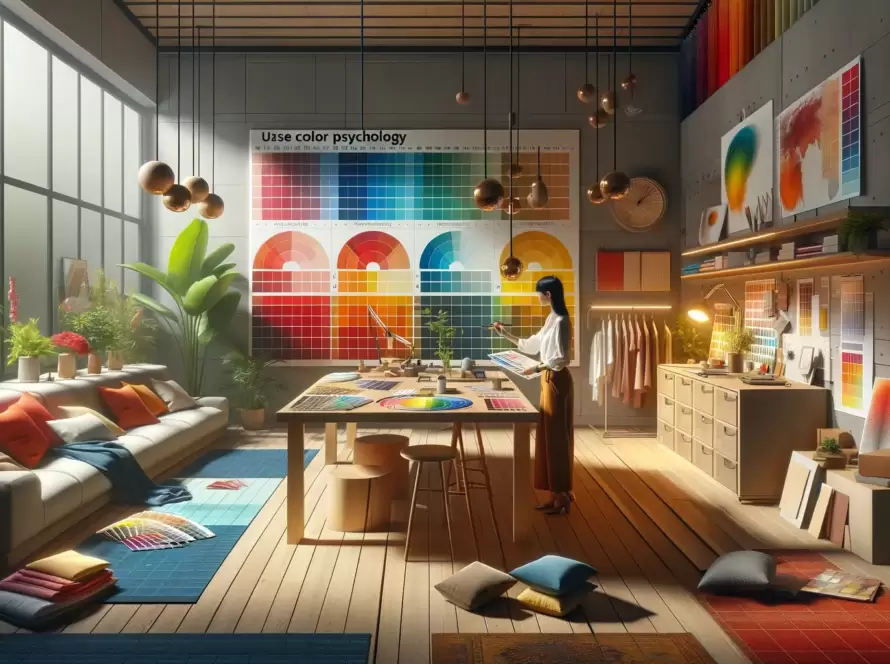
Table of Contents
- Introduction:
- Exploring the Foundations:
- Nurturing Creativity:
- Embracing Technology:
- Cultivating Professional Relationships:
- Navigating Educational Pathways:
- Gaining Practical Experience:
- Navigating Professional Certification:
- Embracing Lifelong Learning:
- Conclusion:
Introduction:
Embarking on a journey towards a career in interior design is akin to entering a realm where creativity intersects with functionality. It’s a profession that demands both artistic flair and practical acumen. Whether you aspire to transform spaces into havens of tranquility or revolutionize urban landscapes with avant-garde designs, the path to becoming an interior designer is as enriching as the finished projects themselves.
Exploring the Foundations:
At the heart of interior design lies a profound understanding of design principles and spatial dynamics. Aspiring designers delve into the fundamentals of color theory, architectural drafting, and spatial planning. Courses in art history and design philosophy provide a broader perspective, fostering a nuanced understanding of aesthetics and cultural influences. Embracing these foundational aspects lays the groundwork for conceptualizing and executing captivating design schemes.
Nurturing Creativity:
Creativity serves as the lifeblood of interior design, breathing vitality into spaces and transcending mere functionality. Cultivating creativity involves honing the ability to envision possibilities within constraints, whether it’s reviving historical architecture or infusing modern spaces with eclectic charm. Engaging in activities like sketching, painting, and exploring diverse design styles nurtures creativity, fostering a unique design sensibility that sets aspiring designers apart.
Embracing Technology:
In an era defined by technological innovation, proficiency in design software and digital tools is indispensable for aspiring interior designers. From industry-standard programs like AutoCAD and SketchUp for drafting and 3D modeling to graphic design software like Adobe Photoshop and Illustrator for creating visual presentations, mastering these tools enhances efficiency and enables seamless communication with clients and collaborators. Embracing technology empowers designers to translate ideas into tangible designs with precision and finesse.
Cultivating Professional Relationships:
Interior design thrives on collaboration, requiring adept interpersonal skills to forge meaningful relationships with clients, contractors, and fellow designers. Effective communication and active listening are paramount, enabling designers to glean insights into clients’ preferences and aspirations while articulating their own design vision persuasively. Building a network of industry contacts through internships, mentorships, and participation in professional organizations fosters career growth and opens doors to diverse opportunities.


Navigating Educational Pathways:
Choosing the right educational pathway is pivotal in shaping a successful career in interior design. Accredited programs offered by reputable institutions provide comprehensive curricula and hands-on experience, equipping students with the knowledge and skills needed to thrive in the industry. Whether pursuing a bachelor’s degree in interior design or opting for specialized courses in areas like sustainable design or hospitality interiors, selecting a program that aligns with one’s interests and career goals sets the stage for a fulfilling professional journey.
Gaining Practical Experience:
Beyond the classroom, gaining practical experience through internships, apprenticeships, and entry-level positions is instrumental in bridging the gap between academia and industry practice. Interning at design firms, architectural studios, or furniture manufacturers offers invaluable insights into the day-to-day realities of the profession, from project management and budgeting to client interactions and site visits. Embracing these opportunities not only enhances technical skills but also fosters a holistic understanding of the design process.
Navigating Professional Certification:
Obtaining professional certification demonstrates a commitment to excellence and distinguishes interior designers in a competitive marketplace. Organizations like the National Council for Interior Design Qualification (NCIDQ) offer certification exams that assess competency in areas such as building systems, codes, and project coordination. While certification requirements vary by jurisdiction, completing the NCIDQ exam opens doors to licensure and enhances credibility among clients and industry peers, paving the way for career advancement and increased earning potential.
Embracing Lifelong Learning:
The journey towards becoming a seasoned interior designer is marked by a commitment to lifelong learning and professional development. Staying abreast of emerging trends, materials, and technologies through workshops, seminars, and continuing education courses enriches design practice and fosters innovation. Engaging with diverse perspectives and pushing the boundaries of creativity ensures that designers remain agile and adaptable in an ever-evolving industry landscape, poised to leave an indelible mark on the spaces they create.
Conclusion:
Embarking on a career in interior design is a voyage of self-discovery and creative exploration, where passion converges with purpose to shape the built environment. By embracing the foundational principles of design, harnessing the power of technology, and cultivating meaningful relationships, aspiring designers can chart a course towards success. With dedication, perseverance, and a commitment to lifelong learning, the journey towards realizing one’s design dreams is limited only by the bounds of imagination.


